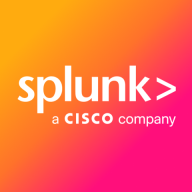

ITRS Geneos and Splunk Observability Cloud are major competitors in the field of real-time monitoring and observability solutions. Splunk holds a slight advantage due to its broader cloud-native capabilities and powerful AI integration.
Features: ITRS Geneos offers comprehensive real-time monitoring with minimal resource usage, flexible customization through plugins, and is a go-to in financial services due to its excellent plug-ins for this industry. Splunk Observability Cloud, on the other hand, excels in end-to-end tracing, cloud-native application support, and features strong visualization and alerting mechanisms. Splunk's standout feature is its AI-powered data analysis, which enhances monitoring efficiency.
Room for Improvement: ITRS Geneos needs to improve its historical reporting capabilities, integration with cloud-native environments, and ease of setup. Enhancing its documentation and mobile access will significantly benefit users. Splunk Observability Cloud could refine its pricing structure, improve integrations, and simplify its user interface, as some users find its search and aggregation functions could be more efficient.
Ease of Deployment and Customer Service: ITRS Geneos is better suited for on-premises environments with direct customer support, despite a complex deployment process. Splunk Observability Cloud is versatile, handling various deployment scenarios and offering extensive cloud support. Both provide robust customer service; ITRS is praised for its direct approach, while Splunk's broad support network caters to its wide-ranging features.
Pricing and ROI: ITRS Geneos is seen as costly but effective, particularly valued in high-stakes environments like finance. Splunk’s pricing can be prohibitive due to its data volume-based model, potentially affecting ROI. However, both offer operational efficiencies and reliability. Pricing should be weighed against the specific needs and scales of usage to determine investment value.
| Product | Market Share (%) |
|---|---|
| Splunk Observability Cloud | 2.1% |
| ITRS Geneos | 1.1% |
| Other | 96.8% |


| Company Size | Count |
|---|---|
| Small Business | 6 |
| Midsize Enterprise | 12 |
| Large Enterprise | 39 |
| Company Size | Count |
|---|---|
| Small Business | 20 |
| Midsize Enterprise | 10 |
| Large Enterprise | 46 |
ITRS Geneos is a real-time monitoring tool designed for managing increasingly complex, hybrid and interconnected IT estates.
Built with financial services and trading organisations in mind, it collects a wide range of data relating to server performance, infrastructure, trading, connectivity and applications, and analyses it to provide relevant information and alerts in real time.
Geneos can give full stack visibility across highly dynamic environments and presents all the information through a single pane of glass and its configurable and customisable dashboards provide end-to-end visibility to both technical and business users.
For more information, please visit https://www.itrsgroup.com/products/geneos
Splunk Observability Cloud offers sophisticated log searching, data integration, and customizable dashboards. With rapid deployment and ease of use, this cloud service enhances monitoring capabilities across IT infrastructures for comprehensive end-to-end visibility.
Focused on enhancing performance management and security, Splunk Observability Cloud supports environments through its data visualization and analysis tools. Users appreciate its robust application performance monitoring and troubleshooting insights. However, improvements in integrations, interface customization, scalability, and automation are needed. Users find value in its capabilities for infrastructure and network monitoring, as well as log analytics, albeit cost considerations and better documentation are desired. Enhancements in real-time monitoring and network protection are also noted as areas for development.
What are the key features?In industries, Splunk Observability Cloud is implemented for security management by analyzing logs from detection systems, offering real-time alerts and troubleshooting for cloud-native applications. It is leveraged for machine data analysis, improving infrastructure visibility and supporting network and application performance management efforts.
We monitor all Application Performance Monitoring (APM) and Observability reviews to prevent fraudulent reviews and keep review quality high. We do not post reviews by company employees or direct competitors. We validate each review for authenticity via cross-reference with LinkedIn, and personal follow-up with the reviewer when necessary.